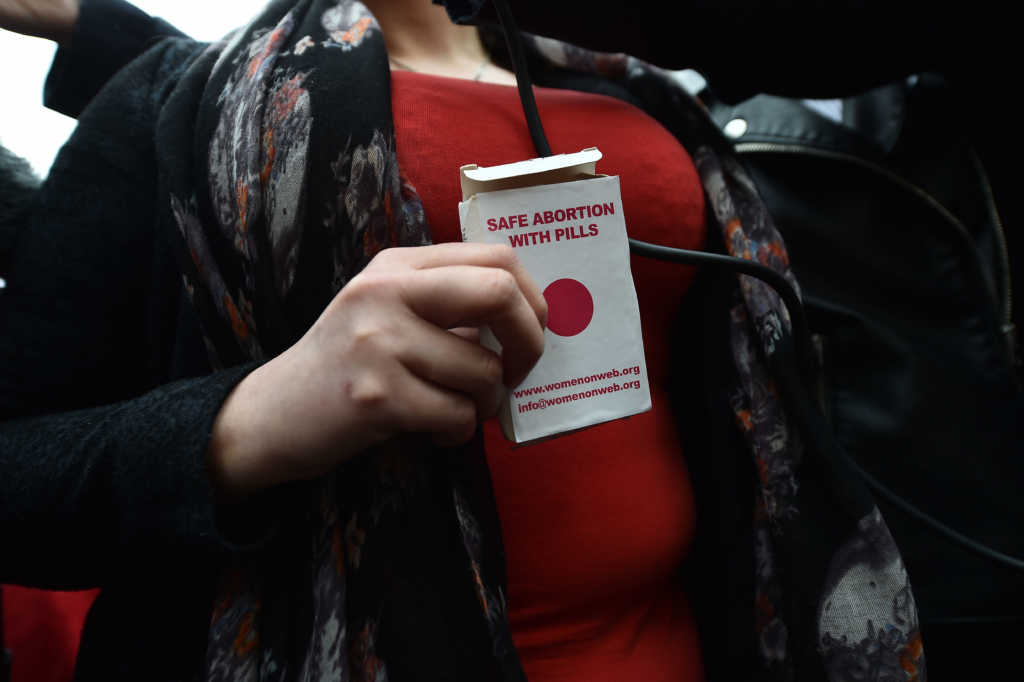Reminiscent of the days when Lysol published ads subtly encouraging women to use its products as a form of at-home birth control, Vice has published a step-by-step guide for women looking for DIY abortion advice.
Throughout the piece — “What to Know About Giving Yourself an Abortion” — the writer, Marie Solis, explains how to “pass the pregnancy,” seemingly likening the conception and development of a human life to a kidney stone.
Prior to writing the article, Solis requested women who have managed their own abortions to share their experiences with her.
Self-managed abortion, as Solis called it, looks quite different from how it did prior to the U.S. Supreme Court’s 1973 decision in Roe v. Wade.
People who self-induced abortions in the decades before the landmark Supreme Court ruling sometimes resorted to drinking toxic chemicals, throwing themselves down the stairs, or using crude instruments like knitting needles or a coat hanger, the latter of which has become a universal symbol of the life-threatening consequences of restricting people’s access to abortion care. The hanger may still function as a powerful image, but it’s no longer accurate when it comes to representing what it means to self-induce an abortion: Self-inducing or self-managing an abortion is now synonymous with taking pills, a safe and effective method of ending a pregnancy.
Though Solis wrote in the piece that it is a violation of Food and Drug Administration rules to sell or buy abortion-inducing drugs online, she still directed readers to “several websites where people can buy the drugs online.”
She spent a portion of her article on Aid Access, a site operated by a licensed physician, Rebecca Gomperts, a Netherlands-based doctor who writes prescriptions for the abortion-inducing pills herself and sends them to the U.S. The FDA has sent Gomperts a warning letter, accusing her of violating federal law. In return, the doctor is suing the government agency.
Solis, nevertheless, tried to normalize the idea of buying abortion-inducing pills online by writing: “Patients who go to a clinic for a medication abortion will be sent home with a package of pills to take on their own, and pass the pregnancy without any medical supervision — just like the person who buys the pills on the internet.”
The writer then, later in the piece, explains that one pill is taken to kill the unborn child and a second is taken to induce contractions to expel the fetus from the womb, noting hemorrhaging, infection, and fever is possible.
Solis claimed abortion-inducing pills are by and large safe, but that’s not necessarily the case, as explained by Patrina Moseley, director of Life, Culture, and Women’s Advocacy at the Family Research Council:
The abortion business makes a chemical abortion sound safe and simple, but this is a multi-day traumatic process that, according to the Mifeprex medication guide, could take up to 30 days to complete. An incomplete abortion can happen up to 10% of the time during chemical abortions, or even more frequently after the ninth week of pregnancy. If this happens, a woman can try taking more doses of Misoprostol or have a surgical abortion by vacuum or suction aspiration to remove the baby’s remains through the cervix.
According to the FDA, from 2000 to 2018, the total number of adverse events related to chemical abortion includes 24 deaths, 97 ectopic pregnancies, 1,042 hospitalizations, 599 blood transfusions, and 412 infections (including 69 severe infections), for a total of 4,195 adverse events. And these are just the events reported to the FDA.
Chemical abortions are not safe or simple. In a chemical abortion, the mother will have to see and dispose of the remains of her aborted child on her own.
Vice isn’t the first outlet to create such a DIY guide. The secular magazine Jewish Currents published an article in early January, giving readers similar step-by-step advice to induce their own abortions.



